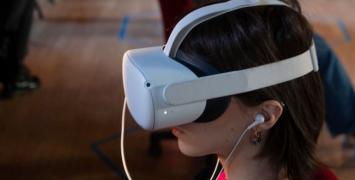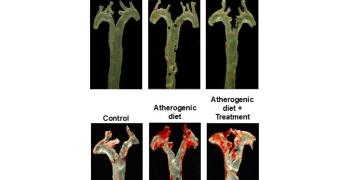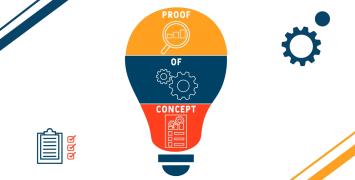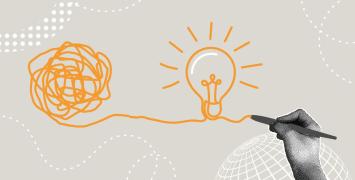I see your true colours (and that's why I eat you)
A smartphone app that can provide real-time information on the edibility of packaged food? After exploring how to improve gas detectors, ERC grant holder Daniel Prades ventured into a rather different industrial sector…

A physicist and nano-scientist, Daniel Prades sees himself as an out-and-out academic. In 2013, when he and his team at the University of Barcelona's Department of electronic and biomedical engineering started researching new low-power consumption strategies for gas sensors, little did he know that he would soon find himself grappling with food retailers, discussing the funding and marketability of his newly founded start-up company.
With his ERC Proof of Concept grant, Prof Prades developed labels that can be placed inside food packages and are able to provide real-time information on its freshness. They do so thanks to an ink which is very similar to the ink we would normally find in our printers at home, but changes its colours depending on the interaction with gases emitted from the food inside the package. These special labels are placed in a transparent, solid layer, which prevents all forms of contamination while still allowing a chemical reaction to take place within the label.
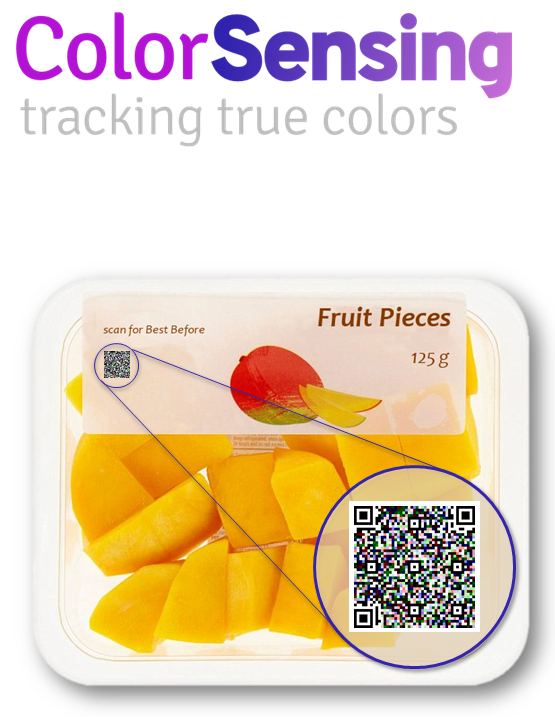
An ordinary smartphone camera then digitally processes the change in the ink and translates it, via an app, into real-time information for customers, retailers and producers – indicating for example if the food is rotten, whether it has been well preserved, and how long it will stay fresh and tasty. This technology, which has the potential to empower customers as well as to improve the entire supply chain process, has resulted in the birth of ColorSensing, a start-up company founded in June 2018 by Prof Prades and his colleagues.
 (L-R) Daniel Prades, Petter Pfeiffer, Ismael Benito-Altamirano,
(L-R) Daniel Prades, Petter Pfeiffer, Ismael Benito-Altamirano,Maria Eugenia Martin.
As Prof Prades explains, the chemical results that form the basis of ColorSensing's main product date back to his ERC Starting Grant, when he and his team were exploring new tools to obtain cheaper and better performing gas sensors. It was at this point that they realized that, instead of issuing a standard electric signal through a fixed-cost microchip they could have used a printable colour label to emit a visual signal, to show the chemical processes detected. "We came up with a different, cheaper methodology to obtain the same result. What made the difference to the discovery process though, was the flexibility allowed by the ERC grant, which gave us all the room for manoeuvre we needed to experiment with new ideas, and a much broader perspective", he said.
Now the challenge was to develop a reliable system that could detect colour changes and transform them into an output that would be easily understandable and accessible to everyone. Given the amount of smartphone users, creating an app was the natural outcome of their discoveries. And once they solved the issue of chromatic distortion in smartphone cameras, they knew it was a done deal. "Being colour-blind myself, I was really glad that, also thanks to the algorithm we used to avoid chromatic distortion our app gives the opportunity to literally everyone who owns a smartphone to understand the real condition of food behind the packaging". In addition, the app's automated readout system translates highly complex information in reliable, easily understandable data that can be customized for customers, retailers and producers.
In practical terms, ColorSensing has the potential to change the way we relate to the food we eat, helping us make smarter decisions based on up-to-date, dynamic information. This aspect could also have significant implication on food waste, whose consequences, according to FAO, create one of today's biggest problems. ColorSensing's technology could help retailers develop adjustable expiration date labels, and spare them invasive quality controls that result in environmental and financial waste.
According to Prof Prades, it was in the area of human resources that the ERC Proof of Concept grant proved really crucial, because it allowed him to hire collaborators from different backgrounds, with the right technical and business profiles. As he put it, "A substantial part of this adventure concerned aspects that have little to nothing to do with science. It was mainly thanks to Maria Eugenia Martín, ColorSensing's co-founder and CEO, that we identified the food sector as the best option to market our product. In hindsight, I wouldn't have been able to sort it all out by myself"
This doesn't mean that Prof Prades didn't learn at least some tricks of the trade. In fact, the team had to face the issue of product acceptance: technically, one could say that ColorSensing functions like a food semaphore, either giving the green light to that chickpeas jar, or stopping us from buying it because it was poorly conserved. However, the majority of retailers aren't keen on labels that are immediately visible before their customers' eyes – especially when these become red. With ColorSensing's system though, the label colour changes are only apparent to app users – which makes the product particularly attractive for companies.
Maybe even more importantly, Daniel Prades says that direct contact with the market has already changed the way he does research, towards a more business-oriented approach. Nevertheless, he continues to value bottom-up research: while ColorSensing is about to go to market, Prof Prades is also working on another study, which was an additional collateral benefit of his initial ERC Starting Grant research on microchips. During the ColorSensing project, while working on light activated devices with colleagues from Braunschweig University of Technology, an innovative lens-free microscope that works using extra small LED microchips of 100 nanometres in size was conceived, leading to another EU-funded project, ChipScope.
According to Daniel Prades, "Basic research is like the basic food of any industrial innovation. If you want to harvest valuable results, you need to cultivate a garden of diverse ideas and let them grow. Not all of them will flourish into a marketable product, but you need to have a sufficient critical mass to be able to pick at least some flowers."


